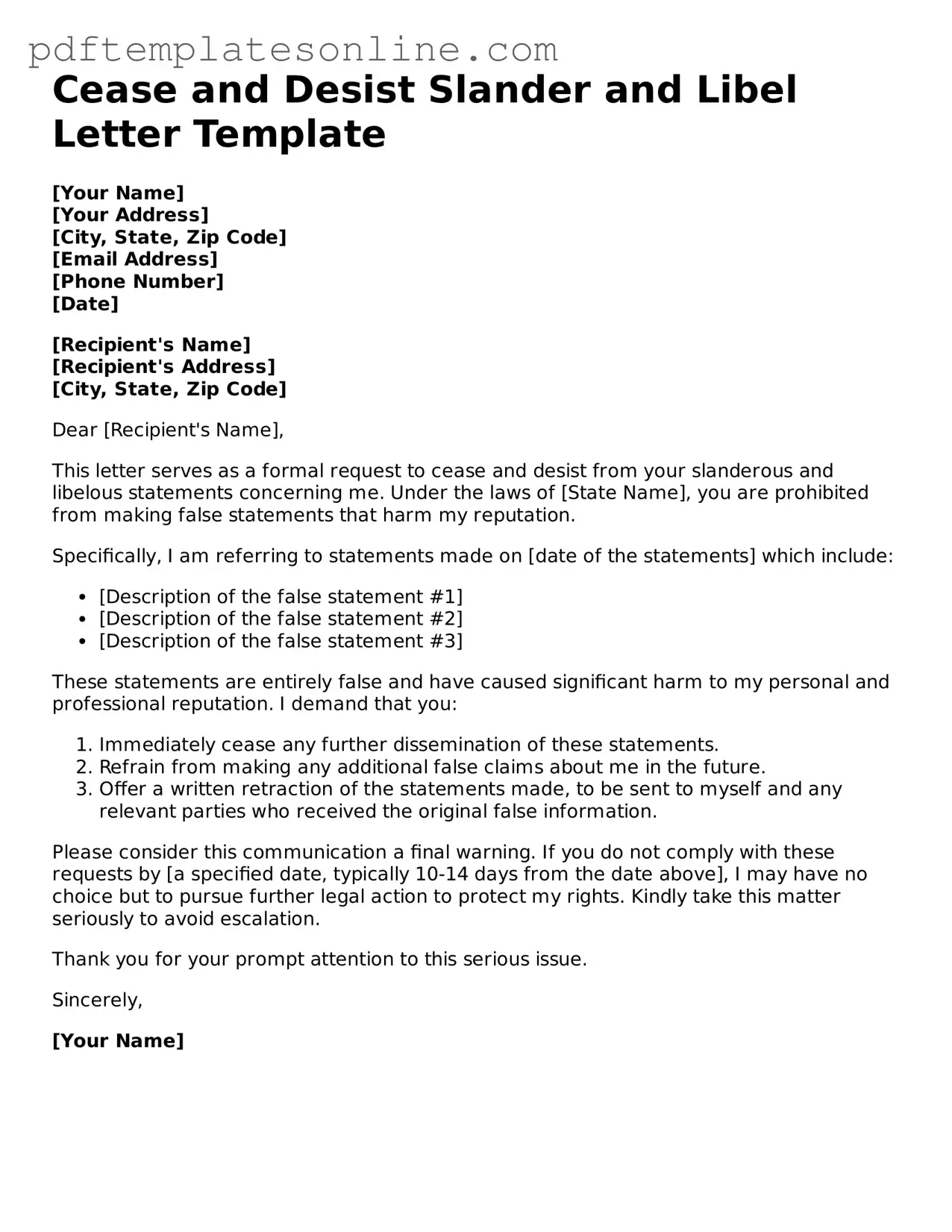Filling out a Cease and Desist Slander and Libel Letter form can be a straightforward process, but many individuals make common mistakes that can undermine their efforts. One frequent error is failing to clearly identify the statements that are considered slanderous or libelous. Without specific examples, the recipient may not understand what behavior needs to stop.
Another mistake is not providing sufficient context. Simply stating that someone has made false claims is not enough. It is crucial to explain how those statements have harmed your reputation or caused you distress. This context strengthens your position and makes your request more compelling.
Many people also overlook the importance of including their contact information. Without clear contact details, the recipient may have no way to respond or clarify any misunderstandings. Make sure to include your name, address, phone number, and email address.
Some individuals neglect to sign the letter. A signature adds a personal touch and indicates that you are serious about your claims. An unsigned letter may be dismissed or ignored, reducing its effectiveness.
Additionally, failing to state a deadline for compliance can weaken your request. It is essential to give the recipient a clear timeframe within which they must cease the harmful behavior. This urgency can prompt a quicker response and demonstrate the seriousness of the situation.
Another common oversight is not keeping a copy of the letter for your records. Documentation is vital in case the matter escalates. Retaining a copy ensures you have a reference point for any future discussions or legal actions.
Lastly, some individuals may choose an overly aggressive tone. While it is important to assert your rights, a threatening or hostile tone can backfire. A calm and professional tone is more likely to yield a positive response and facilitate resolution.
